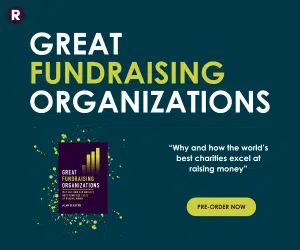Attribution analysis: measuring the value of campaigning
Successful fundraising campaigns will often use multiple channels to drive interactions with potential donors. However, it can sometimes be difficult to identify which channel is working most effectively.
Offline, donors might see a charity shop on the high street or engage in a face-to- face discussion with a charity representative, whilst online, donors might search for you on Google or click on a sponsored ad on social media. In this way, your donors experience your brand in many different ways over time. But what is to say that a face-to- face discussion which happened offline didn’t drive someone to then search for your organisation online?
Attribution analysis involves the study of data generated by every single digital exposure.
With attribution analysis, charities can see which exposures were important and how activity in one channel influences responses in other channels. It can even allow organisations to measure the effect that above the line activity, such as radio and TV advertising, has on other channels using ad synching technologies. It may still be impossible to account for how much influence every offline experience of your cause has generated, but it is at least possible to understand supporters’ journeys online, thanks to tracking technology and data analysis.
From there, charities are able to identify which interactions contributed to a supporter’s decision to donate and guide their marketing investment accordingly, to grow donations overall.
Attribution across social media
The mix of social platforms available can sometimes make it difficult for charities to home in on the channel mix that will drive best results, and where they should focus their marketing spend and resources. This is where attribution analysis can help. Whatever your end goal, diving into an attribution analysis study will provide enough insight to know where best to invest your time and money by showing you how activity in disparate channels influences response downstream. This type of analysis is best suited to a data specialist with experience with a multitude of channels. With their knowledge, they can swiftly identify which channels are performing best and tweak a campaign’s channel mix to drive improved So which tools should be used to identify where a charity is achieving the best results?
Google Analytics should be the first point of call; it’s extremely useful for data collection, processing and analysis, as well as identifying which online channels drive traffic to your site. With Google Tag Manager (a free tool for managing website tags) working alongside Analytics, you can also collect custom metrics based on what events you want to track. Used together, charities can check what channel or social platform is bringing donors to their site and their behaviour once they’re on-site, as well as the downstream effect on supporter behaviour. With this level of insight, charities can tweak their campaigns accordingly.
Reference: Tracking your web metrics
Making the most of your campaign budget
The Donkey Sanctuary is a great example of a charity that maximised results through attribution analysis. In a campaign aimed at increasing its visibility, paid social posts supported an SEO strategy. To get a holistic view of channel performance it utilised the following Google Analytics features:
Advertisement
- Cross domain tracking
- Custom campaign tracking
- Content groupings
- Multi channel funnels
- Custom channel groupings
- Calculated metrics
- Advanced segments
As a result of the campaign, The Donkey Sanctuary was successful in driving a 32% increase in organic traffic and downstream donations and adoptions.
The insight available to charities through using the Google free tools available can help reveal the true value of social strategies and how they can drive subsequent involvement and support. This can inform a content development strategy and show you what social media activity attracts valuable direct supporters, fundraisers or volunteers. From this, charities can also make best use of the budgets they have available and know how to improve each subsequent campaign – a vital consideration for those organisations looking to achieve maximum impact.
Louise Burgess is COO at equimedia.




